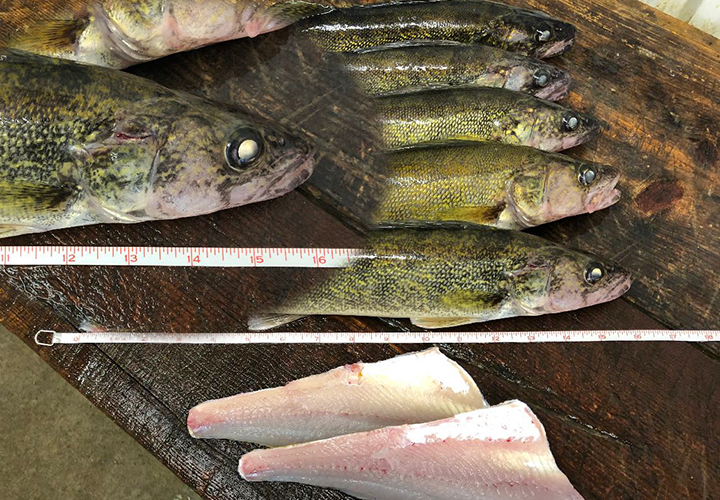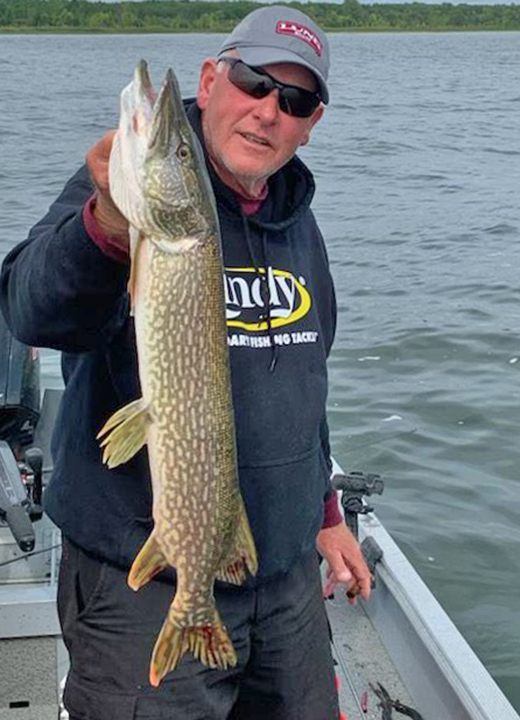Lake Winnie - Cutfoot Sioux 2022 Fishing Outlook
Bowen Lodge guest Lonnie Mundt 2021 with beautiful Lake Winnie Walleye
Walleye anglers are sitting on the edge of their chairs, checking images of ice-out on Northern Minnesota lakes and searching for clues about where they’ll be able to fish on the upcoming opener.
We’ve been watching too and have noticed that the origins of those image are creeping slowly, but steadily northward toward Lake Winnibigoshish and Cutfoot Sioux. With only 8 days remaining until the 2022 Minnesota Walleye opener, it’s going to be nip and tuck. Thanks though, to the arrival of this very much needed warm spell, we’ve become cautiously optimistic that our lakes, at least for the most part, will be open and accessible on May 14th!
This year, more than ever, there is good reason for anticipation of a great walleye fishing season to be high. Early data from MN DNR 2021 Fisheries surveys continue to support the widely held belief that 2, back-to-back, “dynamo year classes” of walleyes from both the 2018 and 2019 spawning seasons now dominate the population of walleyes in Winnie.
That means the population of “catchable” size fish in our system will be better in 2022, than it has been for several years. We think even better than it was when the very strong, 2013-year class reached maturity in the 2016-2017 seasons.
As the class of 2018 matures, the stage is set for our guests to enjoy not only good fishing for numbers of walleyes this summer, but also fish of desirable quality too. This will offer anglers a unique opportunity to be highly selective about which fish they harvest and which ones they release. And with a good population of the larger 2013-year class fish still in the system, anglers’ photo albums should be filling up with more images of big fish too.
Speaking of being selective, we’ll be encouraging folks to target fish from the 2018-year class for harvesting this summer. Now 4 years old, those fish will achieve sizes ranging from 15 to 17 inches throughout season. Grand Rapids Area Fisheries Dave Weitzel, told us in a recent conversation that a some of the 2018 fish may even graduate into the protected slot range, 18 to 23 inches, before next winter. So, it makes a lot more sense to allow the smaller, 2019 year class fish to reach maturity by releasing them now, so we can enjoy them later, most likely during the 2023 fishing season.
We were already happy about the 2018 fish, but during the 2021 fall assessments, DNR fisheries staff recorded solid evidence that the 2019-year class could easily be larger than the 2018 class. A lot depends on survivals rates from last winter, so we won’t know that for sure until after spring and summer test results are in. But as shown in the accompanying chart above, 2019 could actually be Lake Winnie’s largest year class ever!
Magnum perch Lake Winnie fall 2021
All those hungry walleye mouths to feed could be responsible, in part, for lower-than-average perch numbers in Winnie and Cutfoot. At 8.3 fish per net, the fall survey recorded the lowest number of perch in recent history.
As is often the case though, lower numbers of fish have resulted in more anglers catching perch of greater quality size. In 2021, 25% of perch recorded in angler surveys were over 9 inches. Fall fishing produced good numbers of quality fish, often mixed in with walleyes. Over the past winter, we observed firsthand, anglers with good catches of fish in the 10-to-11-inch range, with an occasional 12-inch bonus.
Perch enthusiasts fishing the lake this summer will be well advised to cover lots of water, checking a variety of habitats. Perch, like most fish are highly adaptable and can be found feeding on anything. Crawfish, minnows, insects and young of the year gamefish are all on the menu. Habitat like gravel bars, weed beds and semi-soft, marl are likely feeding territory and could be found both shallow and deep.
Northern Pike, another popular species with anglers are well suited for Winnibigoshish and connected waters. The protected 22-to-26-inch slot seems to have resulted in some larger average size pike. We’ve seen more anglers catching fish within the protected slot sizes but have also noted more fish over 26 inches being caught too.
DNR fall testing revealed a drop in the total number of pike caught in test nets in 2021. That, according to Grand Rapids Fisheries staff is good news. “Low to moderate pike numbers are desirable to maintain good growth rates and contribute to a desirable size quality.” Their spring assessment says.
One thing we know is that anybody who wants to catch “eater” size pike on Winnie still can do it. According to the test net results, Lengths ranged from 15.1 to 30 inches with a mean length of 22.2 inches. With a bag limit of 10 fish under 22 inches, it doesn’t take long to gather enough fillets for fish fry, a plate of blackened pike or even better yet, coconut pike delight.
Panfish are important to our guests, especially during summer and fall. If you hadn’t already heard, Cutfoot Sioux made the list of lakes to receive protection under the “Quality Sunfish initiative.” The initiative, widely accepted by anglers, is aimed at helping restore larger panfish into systems where heavy harvest pressure has occurred.
During recent years, sunfish numbers throughout the Cutfoot system have rebounded. We have noted though that many of them had not achieved larger sizes. So, for our guests, the 5 sunfish daily limit could be an exciting development. We’ll know more as time goes on, but we’re optimistic that once again, our guests can enjoy catching some of those “pie plate size” Bluegills that the Cutfoot and Winnie systems have been famous for.
The late ice out affects us all, and like we said before, we’re just as anxious as you are to know how conditions will be for the opener. Keep your fingers crossed for more sunshine and breezy conditions and please do stay in touch; we’ll keep you posted about conditions every step of the way.























